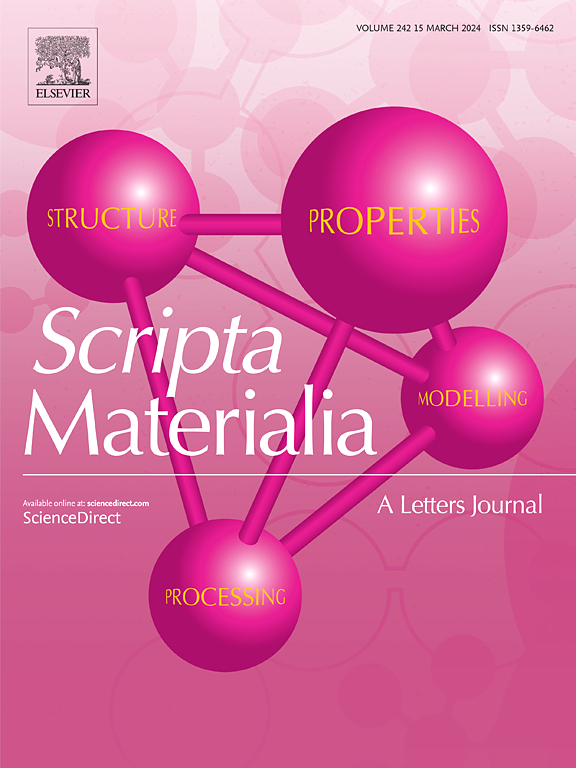光照下ZnS中位错迁移率降低的直接证据和原子尺度机制
IF 5.6
2区 材料科学
Q2 MATERIALS SCIENCE, MULTIDISCIPLINARY
引用次数: 0
摘要
半导体的光塑性,其机械性能如强度、硬度、韧性和延展性受光的影响,已经报道了几十年。尽管这种现象引起了人们对可变形半导体器件的可制造性的极大关注,但由于缺乏直接证据,它们的潜在机制尚未得到很好的理解。在这里,我们提供了实验观察和原子见解,以降低位错在硫化锌(ZnS)中的迁移率,作为一种模型材料,在光。利用光纳米压痕和透射电子显微镜,我们观察到位错在光照下比在黑暗中滑动的距离更短,并且在两种条件下都没有明显的变形双胞胎。通过原子尺度的模拟,我们证明了位错迁移率的降低是由于光激发引起的位错核心周围的佩尔斯应力和应力场的增加。这项研究提高了对无机半导体光塑性效应的理解,为利用光调制其机械和相关功能特性提供了机会。本文章由计算机程序翻译,如有差异,请以英文原文为准。

Direct evidence and atomic-scale mechanisms of reduced dislocation mobility in ZnS under illumination
Photo-plasticity in semiconductors, wherein their mechanical properties such as strength, hardness, toughness, and ductility are influenced by light, has been reported for several decades. Although such phenomena have drawn significant attention to the manufacturability of deformable semiconductor devices, their underlying mechanisms are not well understood due to the lack of direct evidence. Here we provide experimental observation and atomic insights into the reduced mobility of dislocations in zinc sulfide (ZnS), as a model material, under light. Using photo-nanoindentation and transmission electron microscopy, we observe that dislocations glide shorter distances under light than in darkness, and there are no apparent deformation twins in both conditions. By atomic-scale simulations, we demonstrate that the decreased dislocation mobility is attributed to the increased Peierls stress and enhanced stress fields around dislocation cores due to photoexcitation. This study improves the understanding of photo-plastic effects in inorganic semiconductors, offering opportunities for modulating their mechanical and related functional properties using light.
求助全文
通过发布文献求助,成功后即可免费获取论文全文。
去求助
来源期刊

Scripta Materialia
工程技术-材料科学:综合
CiteScore
11.40
自引率
5.00%
发文量
581
审稿时长
34 days
期刊介绍:
Scripta Materialia is a LETTERS journal of Acta Materialia, providing a forum for the rapid publication of short communications on the relationship between the structure and the properties of inorganic materials. The emphasis is on originality rather than incremental research. Short reports on the development of materials with novel or substantially improved properties are also welcomed. Emphasis is on either the functional or mechanical behavior of metals, ceramics and semiconductors at all length scales.
 求助内容:
求助内容: 应助结果提醒方式:
应助结果提醒方式:


